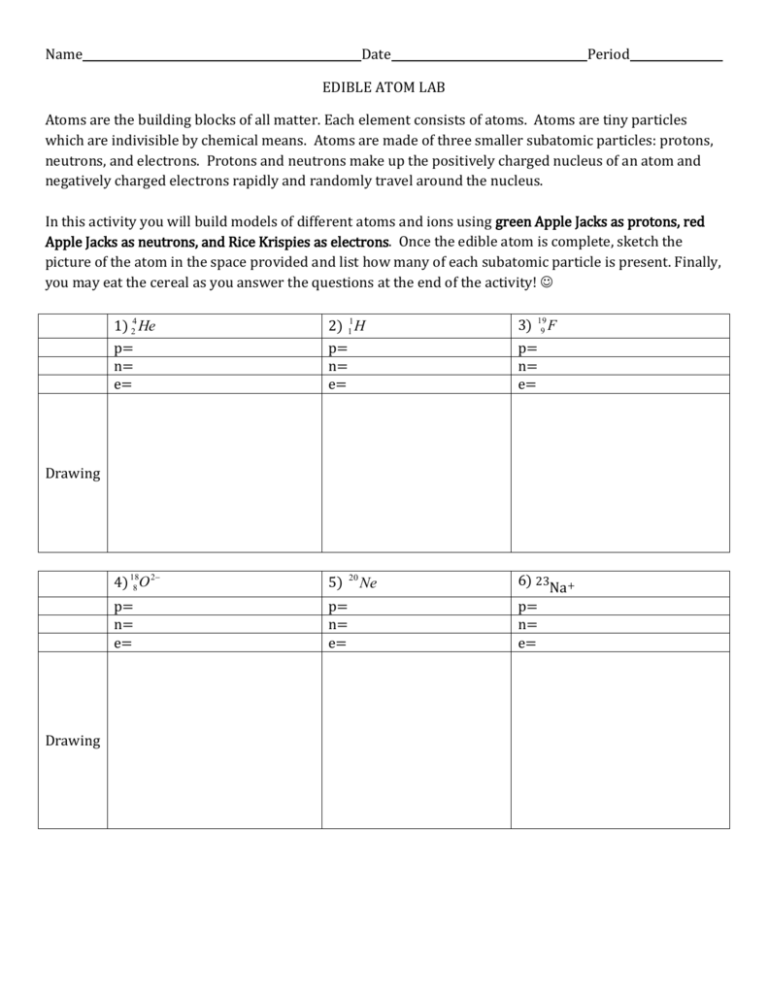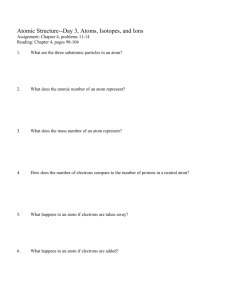Edible Atom Lab: Atomic Structure Worksheet
advertisement

Name Date Period EDIBLE ATOM LAB Atoms are the building blocks of all matter. Each element consists of atoms. Atoms are tiny particles which are indivisible by chemical means. Atoms are made of three smaller subatomic particles: protons, neutrons, and electrons. Protons and neutrons make up the positively charged nucleus of an atom and negatively charged electrons rapidly and randomly travel around the nucleus. In this activity you will build models of different atoms and ions using green Apple Jacks as protons, red Apple Jacks as neutrons, and Rice Krispies as electrons. Once the edible atom is complete, sketch the picture of the atom in the space provided and list how many of each subatomic particle is present. Finally, you may eat the cereal as you answer the questions at the end of the activity! 1) 24 He p= n= e= 2) 11 H p= n= e= 4) 188O 2 5) p= n= e= p= n= e= 3) 199 F p= n= e= Drawing Drawing 20 Ne 6) 23Na+ p= n= e= 7) 12C 8) 13C 9) 14C p= n= e= p= n= e= p= n= e= Drawing Post-Lab Questions: Answer in complete sentences. 1) Which subatomic particle determines the identity of the element? 2) Describe what the atomic number means. 3) Describe what the mass number means. 4) Explain how protons, neutrons, and electrons are alike and how they are different. 5) When you look at a picture of an atom, how can you tell if it is neutral? 6) If the sodium atom in model #6 loses one electron, what will be the charge of the ion? Why? 7) If the fluorine atom in model #3 gains one electron, what will be the charge of the ion? Why? 8) What is the same about the three carbon atoms in models #7-9? What is different? 9) Can atoms of two different elements have the same mass number? Why?











